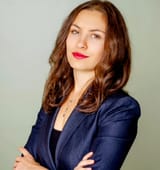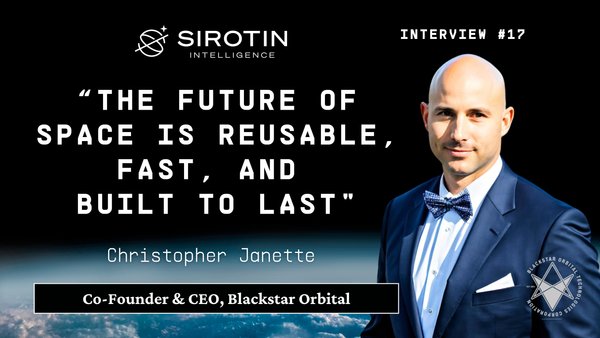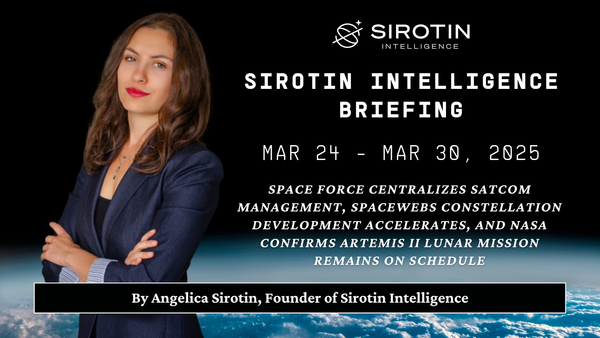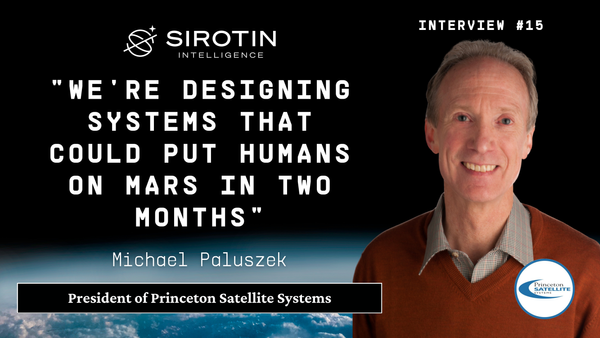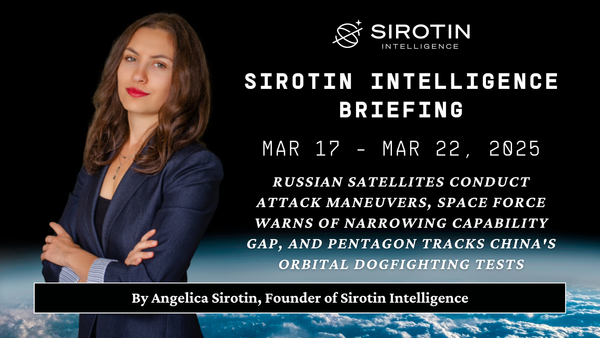"One Kilogram of Helium-3 Is Worth $50 Million": Magna Petra CEO & Serial Entrepreneur Jeffrey Max on The Trillion-Dollar Space Race That Will Power Humanity's Future
Magna Petra CEO Jeffrey Max reveals how lunar Helium-3, worth $50 million per kilogram, could provide unlimited clean energy with zero radioactive waste through fusion technology.
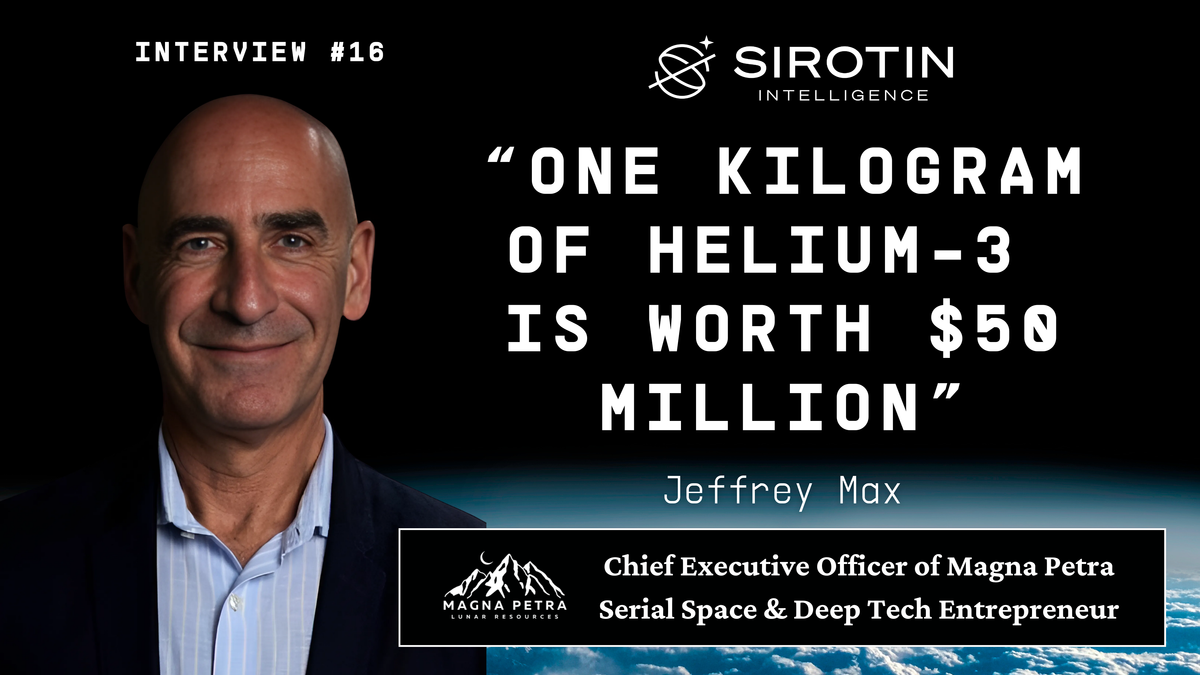
Across the vast expanse of the lunar surface, embedded in the gray, powdery regolith that has remained virtually untouched for four and a half billion years, lies what might be humanity's energy salvation. It has been accumulating there since the formation of our solar system, steadily increasing as the Sun hurls its nuclear byproducts across space—a rare isotope of helium that barely exists on Earth but is abundant on our celestial neighbor: Helium-3.
While the world agonizes over carbon emissions, a new space race has quietly begun—not for flags and footprints, but for resources. Jeffrey Max, CEO of Magna Petra Corp, is pioneering the extraction of lunar Helium-3, worth up to $50 million per kilogram and capable of producing clean fusion energy with zero radioactive waste. With China already demonstrating the capability to return lunar materials to Earth, and an estimated one to three million tons sitting on the Moon's surface, the stakes could not be higher. "What could be more important than a breakthrough technology that provides all the power we need with no carbon footprint and no radioactive waste?" Max asks. "Nothing could be more valuable."
For more information on Helium-3 fusion reactions and their advantages over traditional deuterium-tritium fusion, read page 2 of 'Helium-3 Expanding Market,' which explains the technical benefits including higher efficiency and minimal radioactive waste.
What drew you into the space industry, and how did your experiences as a serial entrepreneur prepare you for the unique challenges of space ventures?
Growing up in the 1960s, space was woven into the national fabric of America. "I'm sitting at my desk right now, and I'm looking at my metal lunch box from when I went to elementary school in the 1960s. It has spaceships on it and lunar habitation depicted on it. When I open it up, there's a thermos inside with an astronaut on it," Max recalls. "When President Kennedy said we're going to go to the moon, I was in first grade. So space was a fundamental element from my childhood. It was in all of our psyches. It was part of the whole Cold War era where it was the US versus the Soviet Union, and who would get to space first, and who would reach the moon first. It was a deeply competitive matter of national pride."
Despite this early fascination, space didn't become a career focus for Max until seven years ago. The transition came unexpectedly in 2018 while hosting a fundraiser at his ranch for the local Science Center and STEM Museum in Colorado, where his wife served as board president. An aerospace engineer approached him, explaining that he had a local business testing propulsion systems for NASA, the Air Force, Lockheed, and other major aerospace companies.
"He had this idea that one could use 3D printing of exotic alloys to produce really novel and innovative propulsion systems," Max explains. "But he said, 'I'm an engineer. I don't know anything about business, and I hate business. I just want to do my engineering, but I've heard that you're a business guy, and would you mind taking a look at this idea?'"
What was planned as a two-hour visit to the engineer's facility stretched into twelve hours as Max became captivated by the potential he saw. The facility was where "propulsion companies would send their thrusters to this guy, and he'd place them in the device, cool them down to extremely cold temperatures, create a vacuum, and then use very high-fidelity instrumentation to evaluate the engine's performance. It was just a couple of trailers at the side of an airport runway."
Max was impressed by "the brilliance that so many of these aerospace engineers possess and can contribute, the vision they can have, and the impact they can create, but many of them lack that business experience, or even interest in the business side of things, which is where so many of these space companies stumble."
Weeks later, the engineer reached out again, asking Max to become chairman, chief executive, and co-founder of new ventures based on Max's suggestions. This became Agile Space Industries, Max's first space venture. After successfully launching Agile, Max stepped back and took some time off: "I went sailing to decompress. I sailed from Portugal to Panama via West Africa” and upon return was introduced to "a young astrophysicistwho came out of JPL who had this idea about a new approach to the extraction, containment, and return of Helium-3 from the lunar surface." This concept became Magna Petra, his current mission.
Max's diverse background in commodity trading, FinTech, mobile payments, and e-commerce prepared him for space ventures in crucial ways. "Being able to gauge and understand which missions and which projects are viable, which individuals behind them have the capability or the prospect of executing them" is a skill developed over "35-40 years of exposure to ideas and being able to run them through my assessment of economic viability and execution viability." Max has built this expertise over decades: "I've been doing startups since the mid-80s, and I don't even know how many years that is, but it's got to be close to 40, it's a lot."
The universal truths of business apply to space as much as any other sector: "If you've got the right people and you're on the right mission, all of these things are always about execution. Ideas are cheap. Execution is hard." Max notes that out of 100 reasonable ideas, "maybe five are viable, and maybe two are going to actually happen. It all winnows down to execution."
In his space ventures, Max doesn't position himself as the innovator or engineer. "The way space companies have worked for me is I get approached by innovators who say, 'I've got this really cool idea, but I don't know how to make it real. Can you help with that?' And that's what I can do."
Max embraces his role in these technical environments: "I love being in situations, particularly with these engineers, where I know I'm the dumbest guy in the room. If you can surround yourself with really smart, creative people and give them the opportunity to develop and explore and make their ideas real, that's how progress happens." He believes "having an innate curiosity is essential" and "always being open to learning more" is key to success in this field.
His gift, as he describes it, is "the very early stage startup work, really articulating the message, identifying what the mission is, reducing all of those aspirations to something that's executable, going out and securing the funding, going out and securing a team that can make it happen, and kind of mentoring that process and encouraging that process through to execution."
At Magna Petra Corp, you're focused on Helium-3 collection from the lunar surface. Could you explain the potential applications of Helium-3 that make it valuable enough to justify the complexities of lunar mining?
Helium-3 is a rare isotope of helium with unique properties that give it extraordinary value. "It is produced by the fusion reaction that is our sun," Max explains. "The sun is essentially a large nuclear fusion device, and one of the byproducts of its activity is the production of hydrogen, helium, argon, and various isotopes and volatiles that are expelled through solar winds."
When these solar winds reach Earth, they're deflected by our planet's magnetosphere, resulting in very little naturally occurring Helium-3 on Earth. The helium found on Earth is predominantly Helium-4, which exists underground from planetary formation and in some natural gas fields, but the percentage of Helium-3 to Helium-4 in these deposits is "very, very low."
The moon, however, with no atmosphere and no magnetosphere, "has been sitting there for four and a half billion years like a sponge absorbing, among other things, Helium-3." Current data indicates there's anywhere between one and three million tons of Helium-3 on the lunar surface.
One of Helium-3's most valuable current applications is in border security. "Helium-3 is something that's called aneutronic, meaning it lacks a neutron. So when you have a molecule that lacks a neutron, it's always looking for a neutron to make itself whole," Max explains. "Nuclear contraband and radioactive material have excess neutrons, and so Helium-3 is the most precise detector of nuclear contraband that we know." It's currently used by border security and governments worldwide to detect nuclear contraband at seaports, airports, and other entry points.
In this intergovernmental market, Helium-3 sells for between $30 and $50 million per kilogram—an extraordinarily high price that reflects both its scarcity and strategic importance. "At 30 to 50 million a kilo, there are plenty of countries who would like to take advantage of Helium-3, and either the price is prohibitive, or simply, there isn't enough to go around," Max explains. Currently, only the US, Russia, and China have steady supplies, harvested from the decay of tritium in old nuclear arsenals. "In the US, Helium-3 is produced by the government at the Department of Energy's Savannah River site, and they produce approximately 20 kilos a year," Max explains. There's also "a small amount of Helium-3 produced by some major gas-producing countries—Qatar in the Persian Gulf is one—but what we have is a very limited earthbound supply, primarily controlled by nuclear powers."
The economics of lunar mining are compelling even at current market rates. "When we look at our initial cargo sizes for return, we're in the 20 to 28 kilo range," says Max. "Depending on your calculations at current market prices, that represents between 700 million and 1.2 billion dollars per cargo. Put that against a mission cost of a few hundred million, and the answer is clearly yes—it's economically viable. We're looking at something like a 70% gross margin, notwithstanding the mission risk."
As the supply increases, Max expects prices to adjust: "If you create a persistent supply chain and start bringing back significant quantities, the price will naturally decrease. As we bring the price down, the applications become broader. Our projections aren't based on 50 million a kilo, but on 2 million a kilo in steady state. We don't anticipate the price staying this high forever. It will remain elevated for the first few years, but once a steady industrial supply chain is established, the price will drop considerably while use cases expand. As the price comes down, more uses emerge, and those additional uses drive more demand."
Max envisions three market phases for Helium-3:
- Current market: Border security and nuclear detection
- Near-term market: Quantum computing refrigeration — Helium-3 "has a very low boiling point. It turns from a liquid to a gas at about three degrees Kelvin, which is virtually absolute zero." This makes it ideal for the cryogenic systems required for commercial quantum computers.
- Long-term market (15-100 years): Clean nuclear fusion — "If your fusion reaction is fusing Helium-3 ions, you have no radioactive waste. So Helium-3 represents the fusion fuel for unlimited clean energy."
This final application is what drives Max's passion: "If you ask why I'm doing this—that's why. We're not doing this for the money. Everyone talks about this ubiquitous AI future, but there simply isn't enough power on Earth to support all that AI. Can we solve this with solar? Absolutely not. With wind? Never."
Max believes Helium-3 fusion represents "enough power to power all the industrialized countries, all of the AI, provide clean power to the developing world, this is a game changer for humanity and for our planet."
For more information on Helium-3's unique properties and how it accumulates on the lunar surface, read the 'Helium-3 Expanding Market' document by Magna Petra.
What do you see as the most significant technical and logistical hurdles in establishing a viable Helium-3 supply chain from the Moon to Earth, and how is Magna Petra approaching these challenges?
Magna Petra Explainer Video
While establishing a Helium-3 supply chain from the Moon to Earth presents numerous challenges, Magna Petra is taking a strategic approach that leverages existing technologies and partnerships to minimize risk.
"We have a unique approach that is low-impact, low-energy, and achievable with technology that exists today—without requiring an extensive lunar power infrastructure," Max explains. This differentiates their method from many approaches proposed over the past 50 years that "rely on extensive power infrastructure to make the extraction work."
A fundamental tenet of Magna Petra's strategy is "not to reinvent the wheel." Max points to the rapidly developing cislunar economy: "We've got some pretty reliable players in the world of launch. We have some pretty reliable players emerging in the field of cislunar transit. You've got Firefly, iSpace, Intuitive Machines, and even with the kinds of struggles that some of these lunar landers have had recently, that stuff's going to get figured out."
Max notes that what they're attempting isn't unprecedented: "The Chinese have already demonstrated this capability. They've landed on the moon, collected isotopes and regolith, blasted off from the lunar surface, and returned these materials to Earth. What we're proposing isn't new—it was accomplished last summer by Chang'e 6."
Magna Petra's approach involves collaborating with partners for launch, cislunar transit, landing, surface operations, and return. "In that whole ecosystem, the only piece that is really being developed by Magna Petra is the isotope collection technology," Max says. Even for this component, they aim to use existing technologies in novel ways, taking "high TRL elements that have flown in space before" to reduce engineering and execution risk.
This strategy effectively shifts execution risk to established players: "We shift the execution risk onto guys like SpaceX, they do a pretty good job. Guys like iSpace, they do a pretty good job." By taking advantage of leadership in each component of the mission, Magna Petra creates a more manageable risk profile.
When asked about the biggest technical challenge, Max identifies "return and re-entry down-massing" as the most significant hurdle, particularly because it receives the least industry-wide focus currently. "I don't have any doubt that we can get there, collect it, pop back up into lunar orbit and get back to Earth. But bringing these cargoes then down to Earth intact, I think that's the next phase in the evolution."
Fortunately, this phase of Magna Petra's activities is projected for 2028-2029, giving the industry time to develop solutions. "I think we'll have seen quite a bit more advancement with groups like The Exploration Company, with Sierra Space, and others that are on the mission of payload return. We'll start to see some leaders emerge in that space."
The Helium-3 market is still emerging and somewhat speculative. How is Magna Petra positioning itself for the "in-between" period before widespread fusion adoption creates significant demand, and what milestones do you believe need to be reached before Helium-3 becomes a commercially viable resource?
Max acknowledges that the emerging nature of the Helium-3 market "gives investors the most heartburn." Transformative technologies require "folks that have the vision to take on the risk, with some sort of belief in what the future holds."
Magna Petra's strategy involves a phased approach to market development, beginning with current applications in border security. "The first few cargoes that we bring back, those are all going to be taken up by governments seeking to bolster their stockpiles of Helium-3 for their border security issues," Max explains.
The next phase will target quantum computing: "We're going to see quantum computing data centers opting for Helium-3 as an optimal refrigerant and cryogenic for their operation." Max cites a consultancy focused on quantum computing that rated Helium-3 as having "a criticality of five, the highest level of criticality for commercial quantum operations" on a scale of zero to five.
For more information on Helium-3's critical role in quantum technology, read 'Helium-3 in the Quantum Technology Supply Chain,' which explains its importance for cooling superconducting quantum computers and its criticality rating of 5 for superconducting quantum hardware.
The long-term (15-100 year) market is nuclear fusion, representing "the fusion fuel for unlimited clean energy."
In terms of milestones, Max believes that initial missions are critical for proving three key elements: "that this material exists in the quantities that our digital twins and our AI say exist, that it's in the locations that we believe it's in, and that we validate that it can be captured and brought back."
The scale of this endeavor is substantial: "We believe that the industrial, commercial return of Helium-3 requires literally billions of dollars of capital to develop that infrastructure and capability. We're talking about large-scale collections."
The financial world and investment community is "very risk averse," so Magna Petra's mission includes proving and validating "all of these potential points of failure and surmounting those points of failure." Once these validations are achieved, "moving forward on the industrial scale collection and return is going to be pretty straightforward."
Patent protection also plays a significant role in their strategy: "We're patenting all aspects of the mission. We're hopeful that the patent protection that we have on our equipment, on our approach, on our methods will protect us for some considerable period of time."
Rather than pursuing traditional venture capital funding, Magna Petra has focused its efforts on sovereign wealth funds: "We've targeted our capital raising with sovereign wealth funds, engaging with countries and nation states and their investment managers who can take a long view, can take a 10-year view, can take a strategic supply chain view."
Max is critical of the current venture capital landscape: "Venture capital today, and even the ones that advertise themselves as space VCs, these guys are essentially bankers. They need to show a specific IRR to their limited partners in three to five years in order to raise the next fund. Most VCs today take risks that are “evolutionary” not “revolutionary” ."
This approach aligns with the longer-term vision required for space resource development: "Exploration used to be the purview of NASA, that's who did exploration, the government. It's a really interesting, transitional time that we're in right now, a shifting of expectations, because our space agencies have all been about scientific exploration and missions like Magna Petra, from a resources perspective, that hasn't really been a priority."
Looking ahead 10-15 years, which emerging space technologies or market segments do you believe will create the most transformative opportunities for both investors and humanity?
When asked about the most transformative space technologies on a 10-15 year horizon, Max returns to the potential of Helium-3 fusion: "What could be more important for us and for the planet than to have a breakthrough technology that provides us with all the power we need with no carbon footprint and no radioactive waste? Nothing could be more valuable."
He emphasizes the global implications: "That brings health and life and innovation to emerging markets and the Global South. It means that China can move away from an economy that's driven on coal-fired power, that India can move away from an economy that's driven on coal-fired power."
Max sees clean energy as the enabler for technological advancement across all sectors: "In industrialized countries, we need sufficient power to make the AI evolution truly valuable for healthcare. Remember, if you don't have the power to run the data centers that run the AI models that develop new medications and therapies, then the promise of AI is an empty promise.”
He ties everything back to the fundamental challenge of power generation: "All of this connects to having adequate power to drive the computational capacity that enables innovation. Unless we can generate that power cleanly—and solar and wind aren't sufficient solutions—we'll continue down a path where we fail to mitigate the environmental impacts of CO2 production."
Max envisions Helium-3 as a transformative resource comparable to previous energy revolutions: "We're looking at a technology that could power the world for the next century, just as oil powered our world for the past 100 years. What's going to define the next century?"
Max doesn't see anything more transformative on the horizon: "I don't think there's anything bigger than this for humanity for the next 10, 20, 30 years. I just don't, because this is the enabler. The supply chain enables unlimited clean power. The unlimited clean power enables the technology innovation and the compute capacity. And that has downstream implications on everything from health care to transportation to longevity to whatever."
He contrasts the Western approach to problem-solving with other cultural approaches: "We operate in crisis mode. We don't address issues until they become crises, and then it's 'hair on fire'—'Oh my god, what are we going to do?'—and we make short-sighted choices as a result."
Max believes that a Helium-3 supply chain can fundamentally change this dynamic: "If a Helium-3 supply chain can give us the opportunity to make better, long-term choices—wow, what a concept."
This perspective drives his passion: "That's what's so exciting about this, that's what gets me excited to get up every day."
For more information on current Helium-3 applications and market dynamics, read the 'Magna Petra FAQ' document, which addresses common questions about Helium-3 uses in defense, quantum computing, healthcare, and nuclear fusion.
About Jeffrey Max
Jeffrey Max is a serial technology & aerospace entrepreneur, investor and executive mentor. Having raised over $850m in growth capital, with several 9-figure exits, Jeff excels at leading fast-scaling hypergrowth companies, backing innovative and resilient engineering teams. With experience leading both private and public companies, he is a “full lifecycle” CEO, integrating decades of operational and execution experience with deep-tech and aerospace innovation.
For more information, reach out to Jeffrey at jeff@magnapatra.com

